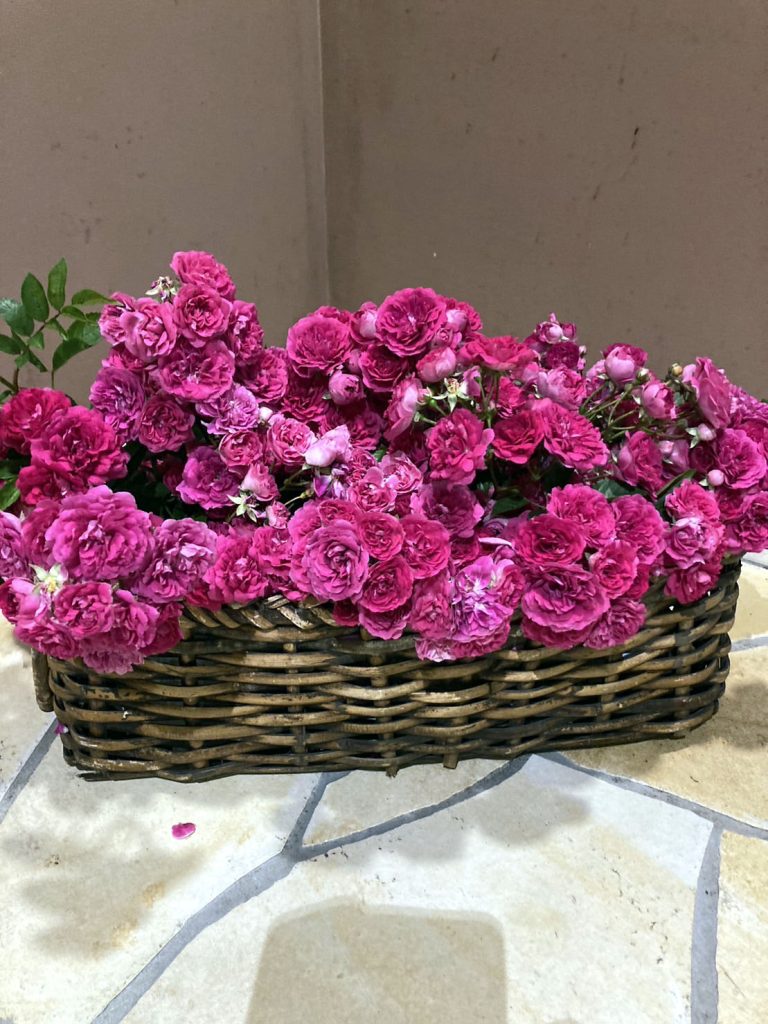
The entrance of the apartment building is filled with a profusion of rose flowers. It’s truly amazing. It instantly brightens up the mood. This sensation is not just my personal feeling, but rather something imprinted in the DNA of humanity as a connection between flowers and humans. In the 1960s, in the Shanidar Cave in Iran, several types of pollen, including Saw-wort and Oxeye Daisy, were discovered in large quantities along with the fossils of Neanderthals who lived during the Paleolithic period approximately 50,000 to 60,000 years ago. The discovery sparked discussions. Dr. R.S. Solecki, the American archaeologist who made the discovery, suggested the theory that Neanderthals had a sense of mourning for the deceased and had the custom of burying them with flowers as grave goods.
One clear example of floral tributes adorning a cemetery is the cave cemetery in Mount Carmel in northern Israel, dating back approximately 12,000 years. Fragrant herbs such as mint and sage, after returning to the soil, left their traces engraved in the soft mud. By offering flowers as a tribute to the deceased, which is the greatest sorrow for humans, they found solace and we do so.
マンションのエントランスに籠いっぱいにバラの花が盛られています。えらいものですね。気分が一変に晴れやかになります。この感覚は私個人の感覚ではなく、花と人間の関わりとして、人類の脳裏に刻み込まれたDNAによるものなんでしょうね。1960年代にイランのシャニダール洞窟で、今から推定五〜六万年前の旧石器時代に暮らしていた ネアンデルタール人の化石とともに、ノコギリソウやヤグルマギクなど数種類の花粉が大量に発見され、話題になりました。発見者のアメリカ人考古学者R・S・ソレッキ博士は、「ネアンデルタール人には死者を悼む心があり、副葬品として花を遺体に添えて埋葬する習慣があった」との説を唱えたそうです。 明らかに墓地を花で飾った献花の例としては、イスラエル北部カルメル山の洞窟にある、約1万2000年前の墓地があります。ミントやセージといった香りのある草花が土に還った後、その痕跡が柔らかい泥に刻まれていたそうです。人間にとっていちばんの悲しみである死者への弔いにも花を手向ける事によって、慰みを得たわけです。
